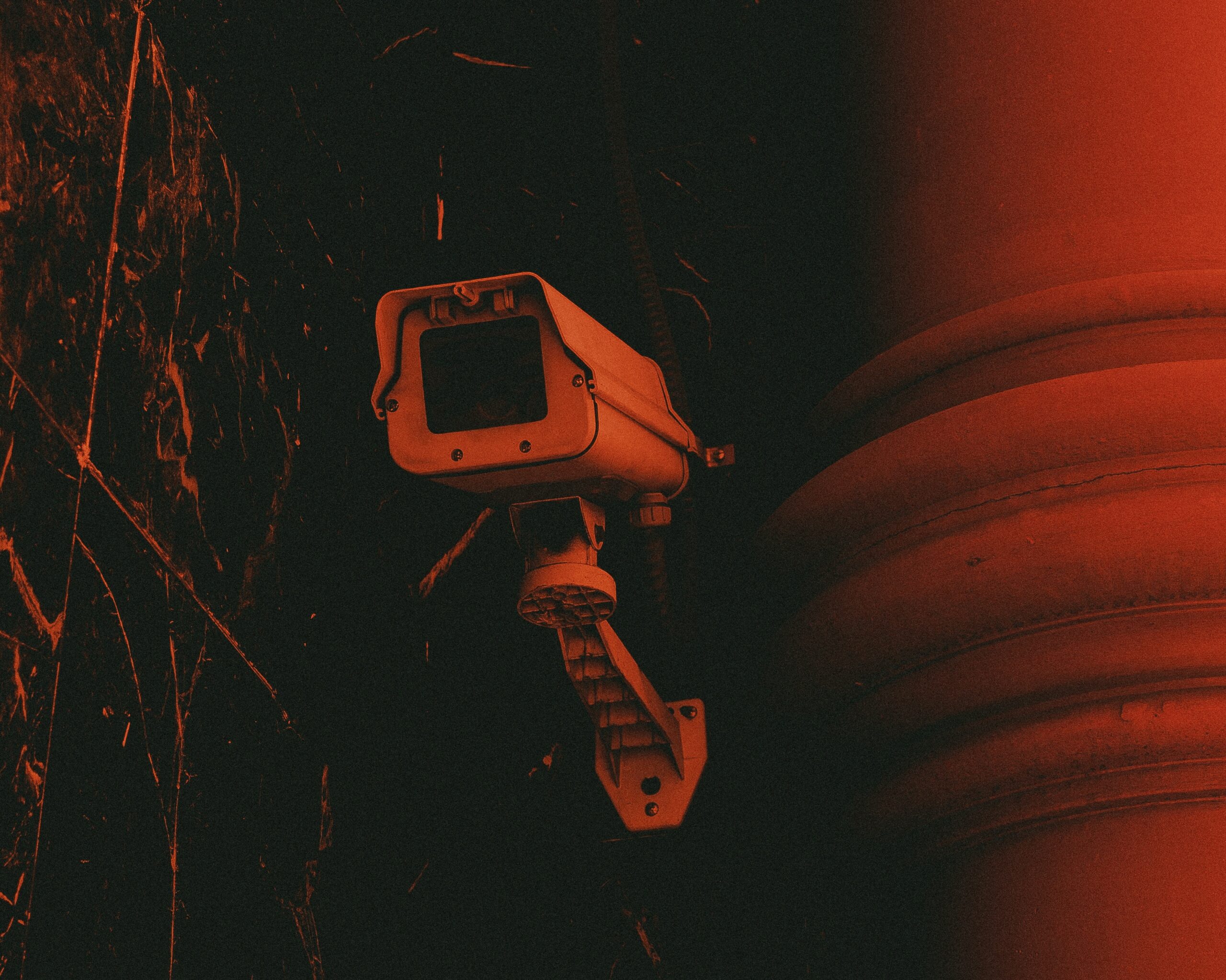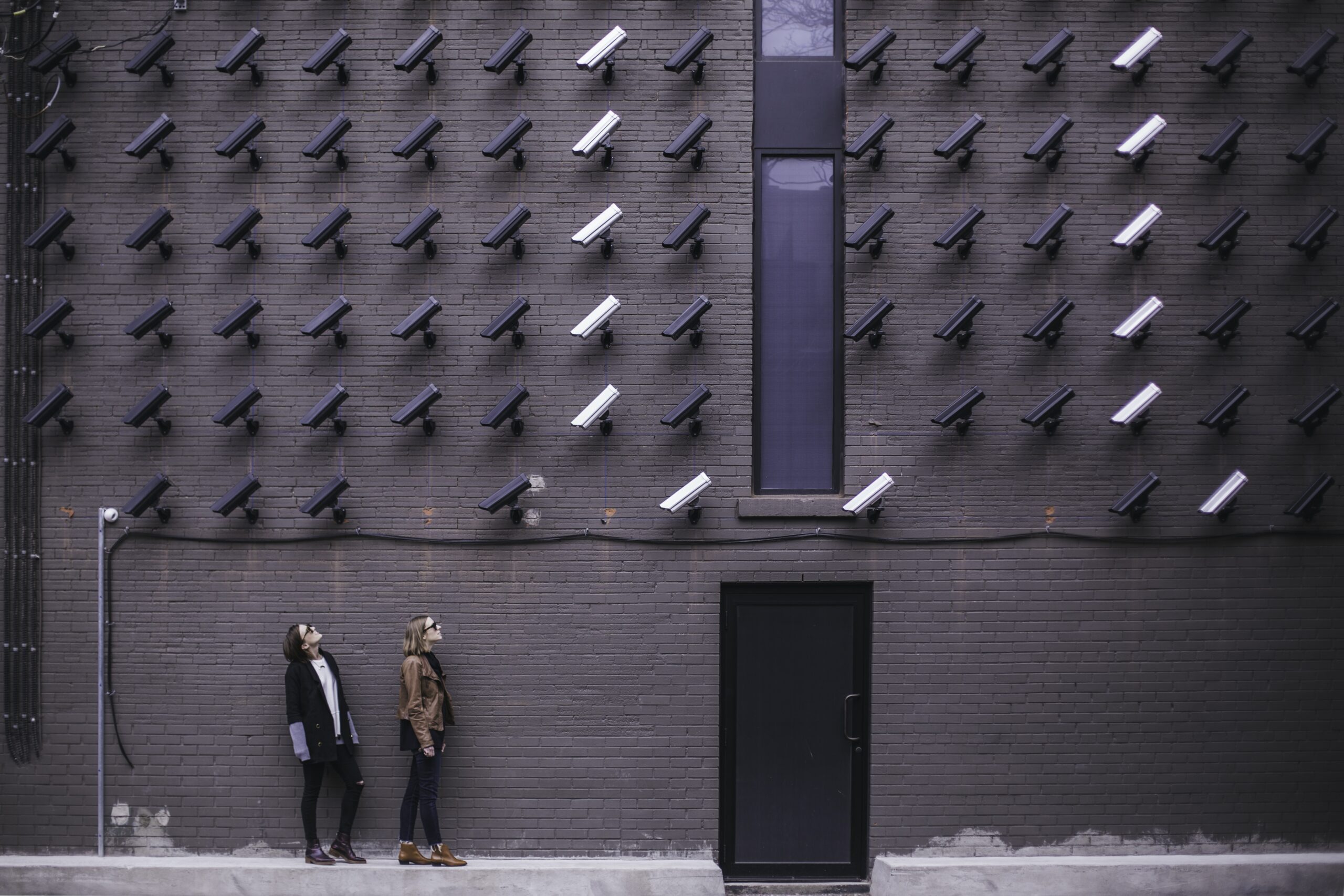Looking for the perfect spotting scope to enhance your surveillance activities? Look no further! In this article, we will explore the top options available on the market and help you choose the best spotting scope for all your surveillance needs. Whether you’re an amateur detective or a professional investigator, finding the right tool for the job is essential. So, let’s dive into this exciting world of spotting scopes and uncover the ideal equipment to level up your surveillance game.

Understanding Spotting Scopes
Definition and Purposes
Spotting scopes are a type of optical device designed for surveillance, wildlife observation, birding, and other outdoor activities that require long-range observation. They are similar to telescopes and binoculars but offer unique functions and advantages.
Spotting Scopes vs Telescopes and Binoculars
Spotting scopes differ from telescopes and binoculars in several key aspects. While telescopes are primarily used for stargazing and astronomical observations, and binoculars are ideal for general use, spotting scopes are specifically designed for observing distant objects with great detail. Spotting scopes typically have higher magnification power than binoculars, but not as high as telescopes. They also have a longer focal length and larger objective lenses, allowing for clear and vibrant images at long distances.
Components of a Spotting Scope
Spotting scopes consist of several components that work together to provide optimal performance. The main parts of a spotting scope include the body, eyepiece, objective lens, focus mechanism, and prism system. The body of the spotting scope houses all the internal components and is usually constructed with durable materials to withstand outdoor conditions. The eyepiece is where the user looks through and can be interchangeable to adjust the magnification. The objective lens is responsible for capturing light, and its size determines the scope’s light-gathering capability. The focus mechanism allows the user to adjust the focus, while the prism system ensures that the image is upright and correctly oriented.
Choosing a Spotting Scope for Surveillance
Factors to Consider
When selecting a spotting scope for surveillance purposes, there are several factors to consider. The most important factors include magnification power, lens quality, durability, size, weight, and ease of use. It is crucial to choose a scope that offers sufficient magnification to clearly observe targets at the desired distances. Lens quality plays a significant role in image clarity, so opt for scopes with high-quality lenses. Durability is essential, especially for outdoor use, as the scope should withstand rough conditions. The size and weight of the spotting scope should also be taken into account, considering the needs and preferences of the user. Lastly, ease of use, including features like focus adjustment and ergonomics, should be evaluated before making a purchase.
Estimating the Surveillance Distance
To determine the appropriate magnification power for surveillance, it is essential to estimate the distance at which you will be observing targets. Understanding the surveillance distance helps in selecting the right spotting scope that provides clear and detailed images. Factors such as the size of the target, atmospheric conditions, and personal preferences should be taken into consideration when estimating the surveillance distance. It is recommended to choose a spotting scope with variable magnification power to allow for flexibility in different scenarios.
Environment and Weather Conditions
The environment and weather conditions in which surveillance will take place should also be carefully considered when choosing a spotting scope. Certain scopes are built to withstand extreme temperatures, moisture, and other challenging conditions, making them ideal for rugged outdoor environments. Opting for a scope with weather-resistant or waterproof features can significantly enhance its longevity and reliability in various weather conditions. Additionally, considering the portability and ease of setting up the spotting scope in different environments can greatly impact its usability during surveillance activities.
Types of Spotting Scopes
Angled Spotting Scopes
Angled spotting scopes are designed with an angled eyepiece, allowing for a more comfortable and ergonomic viewing position. They are especially beneficial when observing targets at different angles or heights, as the angled design allows for more flexibility in adjusting the viewing angle. Angled scopes are also convenient for sharing the scope among multiple users of different heights, as the eyepiece can be easily adjusted.
Straight Spotting Scopes
Straight spotting scopes, as the name suggests, have a straight-line alignment between the eyepiece and the objective lens. They offer a more straightforward and direct line of sight, making them ideal for quick target acquisition and tracking. Straight scopes are often preferred by individuals who require a more traditional and compact design, as they tend to be more portable and easier to handle. They are also well-suited for viewing targets at ground level or when using a window mount.
Comparison of the Types
Choosing between angled and straight spotting scopes depends on personal preferences and specific surveillance needs. While angled scopes offer greater flexibility and comfort for various viewing angles, straight scopes are typically more compact and easier to maneuver. It is recommended to try both types before making a decision to determine which design aligns better with your intended use and comfort level.
Lens Quality
Importance of Lens Quality for Surveillance
The quality of lenses in a spotting scope is vital for achieving clear and sharp images during surveillance. Higher-quality lenses minimize optical distortions, light loss, and chromatic aberrations, resulting in images that accurately represent the observed scene. Investing in a spotting scope with excellent lens quality can significantly enhance the clarity and detail of the observed targets, making it easier to distinguish important details and gather crucial information during surveillance operations.
Coated vs Fully Multicoated Lenses
Spotting scopes can come with different types of lens coatings, each impacting the performance and image quality. Coated lenses have a single layer of anti-reflective coating on at least one lens surface, reducing glare and increasing light transmission. Fully multicoated lenses, on the other hand, have multiple layers of anti-reflective coating on all air-to-glass surfaces, further improving light transmission and producing brighter, clearer images. Choosing a spotting scope with fully multicoated lenses is recommended for surveillance purposes, as it ensures optimal light transmission and image quality, especially in low-light conditions.
How Lens Quality Influences Image Clarity
The quality of lenses directly affects the clarity and sharpness of the images produced by a spotting scope. High-quality lenses minimize distortions, color fringing, and other optical imperfections that can degrade the image quality. By using high-resolution lenses with excellent light transmission capabilities, surveillance professionals can observe targets with exceptional clarity and detail, even at long distances. Investing in a spotting scope with superior lens quality ensures that critical details will not be missed during surveillance operations, leading to more effective and accurate results.

Magnification Power
Understanding Magnification
Magnification power refers to the degree to which a spotting scope can enlarge the apparent size of a target. It is typically expressed as a multiplication factor, such as 20x or 60x, indicating how many times larger the object appears compared to the naked eye. Selecting the right magnification power is crucial for surveillance activities, as too high a magnification can result in a narrow field of view and reduced image brightness, while too low a magnification may not provide sufficient detail for effective observation.
Choosing the Right Magnification for Surveillance
The ideal magnification for surveillance depends on various factors, including the surveillance distance, target size, and atmospheric conditions. For general surveillance purposes, a spotting scope with a magnification range of 20x to 40x is often recommended. This range offers a good balance between image detail and a wider field of view, allowing for easier target acquisition and tracking. Higher magnifications, such as 60x or more, can be suitable for specific surveillance scenarios where extreme detail is required, but they may sacrifice some field of view and brightness.
Impact of Magnification on Image Clarity
While higher magnification can bring targets closer, it is essential to consider the impact on image clarity. As magnification increases, the image may appear dimmer due to reduced light transmission. This effect can be more pronounced in lower-quality scopes or when observing in low-light conditions. Additionally, high magnification can amplify any hand movements or atmospheric disturbances, resulting in a shaky or blurred image. It is crucial to strike a balance between magnification and image clarity, considering the specific surveillance needs and limitations of the spotting scope.
Spotting Scopes and Tripods
Reason for Using a Tripod with Spotting Scopes
Using a tripod with a spotting scope is highly recommended for surveillance purposes. A tripod provides stability and eliminates the natural shaking that can occur when holding the scope by hand, especially at higher magnifications. With a stable platform, the image produced by the spotting scope will be much clearer, allowing for precise observations and improved target identification. A tripod also reduces fatigue during extended surveillance sessions, as the user does not need to support the weight of the scope for an extended period.
Choosing the Right Tripod for Your Spotting Scope
When selecting a tripod for your spotting scope, there are several factors to consider. The tripod’s maximum load capacity should be compatible with the weight of your spotting scope, ensuring stability and avoiding any potential damage. The tripod’s height and adjustability options are also crucial, as they allow for comfortable viewing positions and flexibility in different surveillance scenarios. Look for tripods with sturdy construction, adjustable leg angles, and smooth panning and tilting mechanisms for optimal performance.
Stability and Image Quality
The stability provided by a tripod significantly enhances the image quality produced by a spotting scope. Even the most advanced spotting scopes with excellent optics cannot perform optimally if they are not adequately stabilized. Using a tripod ensures that the scope remains steady and minimizes any vibrations or movements that can compromise the clarity and sharpness of the observed images. By investing in a high-quality tripod and properly utilizing it in surveillance operations, professionals can maximize the spotting scope’s performance and obtain crystal-clear, detailed visuals.

Popular Brands in the Market
Overview of Top Spotting Scope Brands
When considering a spotting scope for surveillance, it is beneficial to familiarize yourself with popular brands known for their quality and performance. Some of the top spotting scope brands in the market include Swarovski, Leica, Nikon, Vortex, and Celestron. These brands have established a strong reputation for producing high-quality optical devices that meet the needs of surveillance professionals and outdoor enthusiasts alike.
Brand Reliability and Reputation
Reliability is a key factor to consider when choosing a spotting scope for surveillance. Top brands in the market have earned their reputation through years of consistently producing reliable, durable, and accurate optical devices. These brands often invest heavily in research and development to continually improve the performance and features of their spotting scopes. By opting for a reputable brand, you can have confidence in the quality and reliability of your chosen spotting scope, ensuring it will meet your surveillance needs effectively.
Customer Reviews and Ratings
Customer reviews and ratings play an essential role in evaluating the performance and user experience of spotting scopes. Before making a purchase, it is advisable to read reviews and user feedback on popular spotting scope models to gather insights from real users. Customer reviews can provide valuable information about factors such as ease of use, image quality, durability, and customer support. Taking the time to research and consider customer feedback can help you make an informed decision and find a spotting scope that meets your specific surveillance requirements.
Best Spotting Scopes for Surveillance
High-End Options
For professionals or individuals looking for top-of-the-line spotting scopes, several high-end options stand out. Swarovski is known for its exceptional optical quality and offers spotting scopes such as the Swarovski ATX and STX series, which provide outstanding image clarity and versatility. Leica spotting scopes, such as the APO-Televid series, are also highly regarded for their precise optics and rugged build. These high-end options come at a premium price but deliver unparalleled performance for the most demanding surveillance tasks.
Budget-Friendly Options
If you are on a tighter budget but still require a reliable spotting scope for surveillance, there are affordable options available. Vortex Optics offers a range of spotting scopes, including the Diamondback series, known for their excellent value for money. Nikon is another reputable brand that offers budget-friendly spotting scopes with decent optics and durability, such as the Nikon Prostaff series. While these options may not have all the features and optical quality of their high-end counterparts, they still provide adequate performance for many surveillance scenarios.
Best Overall
Choosing the best overall spotting scope for surveillance ultimately depends on individual preferences, needs, and budget. However, one notable spotting scope that consistently receives high praise is the Celestron Regal M2 series. Celestron is well-known for producing reliable and feature-packed spotting scopes at competitive prices. The Regal M2 series offers a range of models with excellent image quality, durability, and versatility, making them a popular choice among professionals and enthusiasts alike.
Maintaining Your Spotting Scope
Cleaning and Care Tips
To ensure the longevity and optimal performance of your spotting scope, proper cleaning and care are essential. It is recommended to use a lens cleaning solution specifically designed for optical surfaces and a microfiber cloth to gently remove dust, fingerprints, and smudges. Avoid using abrasive materials or applying excessive pressure, as this can damage the lens coatings. Regularly inspect and clean the scope’s body, focusing mechanism, and eyecups to prevent dirt or debris from interfering with its functionality.
Storage Recommendations
When not in use, storing your spotting scope properly is crucial to protect it from potential damage. It is recommended to store the scope in a designated case or bag that provides padding, protection from dust, and insulation against temperature or humidity fluctuations. Avoid storing the scope in direct sunlight or extreme environments, as this can negatively impact its performance and longevity. Additionally, removing the battery from any electronic components, if applicable, can prevent damage due to battery leakage.
Safeguarding Against Weather and Damage
When using a spotting scope outdoors, it is essential to take precautions to safeguard it against harsh weather conditions and other potential damage. Using a rain cover or protective sleeve can keep the scope dry during rain or snow, preventing water damage. Additionally, using lens covers or caps when the scope is not in use provides an extra layer of protection against dust, debris, and scratches. It is also advisable to avoid exposing the spotting scope to excessive heat, cold, or impact, as these factors can compromise its functionality or cause permanent damage.
Conclusion: The Best Spotting Scope for Surveillance
Recap of the Top Choices
Choosing the best spotting scope for surveillance depends on individual needs, preferences, and budget. High-end options such as the Swarovski ATX and STX series, and the Leica APO-Televid series offer exceptional optical performance but come at a premium price. Budget-friendly options like the Vortex Diamondback series and the Nikon Prostaff series provide reliable performance at more affordable prices. The Celestron Regal M2 series stands out as a highly regarded and versatile spotting scope that offers excellent value for money.
Investment vs. Functionality
When deciding on a spotting scope for surveillance, it is essential to strike a balance between investment and functionality. While high-end spotting scopes offer superior optics and advanced features, they may not be necessary for all surveillance tasks. Budget-friendly options can still provide adequate performance for many surveillance scenarios. Assessing your specific needs, considering the features and capabilities that are crucial for your surveillance operations, and aligning them with your budget will help you make a wise investment.
Where to Purchase Spotting Scopes
Spotting scopes can be purchased from various reputable sources, both online and in-store. Online retailers such as Amazon, Optics Planet, and B&H Photo Video offer a wide selection of spotting scopes from different brands, along with customer reviews and ratings to aid in the decision-making process. Local outdoor retail stores and specialized optics stores often carry spotting scopes and provide the opportunity to see and test the scopes before making a purchase. It is recommended to compare prices, read reviews, and check the reputation of the seller when choosing where to purchase your spotting scope.

